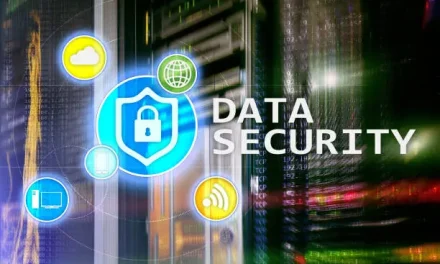In today’s digital age, cybersecurity has become a fundamental concern for businesses, organizations, and individuals alike. Cyber threats such as hacking, phishing, malware, and data breaches are on the rise, making it crucial to implement robust security measures. One of the key strategies for protecting sensitive information and digital assets is establishing a User Cybersecurity Policy. But what is the purpose of the user cybersecurity policy? This article will explore the significance of a user cybersecurity policy, its key components, and the benefits it provides to organizations.
A User Cybersecurity Policy serves as a framework for businesses and organizations to enforce security practices that safeguard sensitive data and digital assets. It provides guidelines for employees and users on how to handle information securely, mitigate cyber risks, and respond to security incidents effectively. Given the increasing frequency of cyberattacks, having a clearly defined cybersecurity policy is not only a best practice but also a necessity for modern organizations.
Why User Cybersecurity Policies Matter
A User Cybersecurity Policy is a set of guidelines and protocols designed to ensure that employees, users, and stakeholders follow best practices for maintaining cybersecurity. Without proper policies in place, organizations become vulnerable to cyber threats, which can result in data loss, financial losses, reputational damage, and legal consequences. Here are some key reasons why user cybersecurity policies matter:
- Protects Sensitive Information – A well-defined cybersecurity policy helps prevent unauthorized access to confidential data, reducing the risk of leaks and breaches. Sensitive information, including customer records, financial data, and intellectual property, must be safeguarded at all costs.
- Mitigates Cyber Threats – Cyber threats such as phishing, ransomware, and social engineering attacks target users who may not be aware of security best practices. By educating users on potential cyber risks, organizations can significantly reduce the chances of falling victim to cyberattacks.
- Ensures Compliance – Many industries are subject to cybersecurity regulations. Having a policy in place ensures compliance with laws such as the GDPR, HIPAA, and other data protection standards, reducing the risk of penalties and legal liabilities.
- Enhances Employee Awareness – Employees often become the weakest link in cybersecurity. A clear policy educates them on safe digital practices, such as identifying phishing emails, using secure passwords, and avoiding risky online behavior.
- Minimizes Financial Losses – Cyberattacks can lead to significant financial losses due to fraud, regulatory fines, business disruptions, and data recovery expenses. Preventing such attacks through proper policies helps protect company assets and business continuity.
- Boosts Customer Trust – Customers value businesses that prioritize security. A strong cybersecurity policy enhances customer confidence in an organization’s ability to protect their data, making it easier to build long-term relationships.
- Facilitates Incident Response – A cybersecurity policy outlines procedures for responding to security incidents, ensuring quick and effective action when a breach occurs. Without a well-documented policy, organizations may struggle to contain and mitigate security breaches efficiently.
Real-World Example
Consider the 2017 Equifax data breach, which exposed the personal information of over 147 million people. The breach occurred due to a failure to patch a known software vulnerability. Had Equifax implemented a stricter cybersecurity policy requiring timely updates and vulnerability management, the attack could have been prevented. This incident highlights why a strong cybersecurity policy is critical.

Key Components of a User Cybersecurity Policy
A comprehensive User Cybersecurity Policy should cover several essential elements to ensure effectiveness. These include:
1. Access Control and Authentication
Defines who has access to what data and ensures the use of strong authentication methods such as multi-factor authentication (MFA) to enhance security.
2. Password Management
Establishes guidelines on password complexity, periodic updates, and secure storage. Encourages the use of password managers to generate and store secure passwords.
3. Data Protection and Encryption
Outlines protocols for encrypting sensitive data and securing communication channels. Encryption ensures that even if data is intercepted, it remains unreadable to unauthorized parties.
4. Device and Network Security
Specifies requirements for securing personal and company-issued devices, including antivirus software, firewalls, and VPN usage. Employees should be required to update their software regularly to protect against vulnerabilities.
5. Email and Internet Usage Policies
Regulates how employees use company email and the internet to minimize risks of phishing attacks and malware infections. This includes restrictions on accessing suspicious websites and downloading unverified attachments.
6. Incident Response Plan
Details the steps to take in case of a cybersecurity incident, ensuring quick mitigation and recovery. Having a documented response plan enables organizations to act swiftly and limit potential damage.
7. Training and Awareness Programs
Mandates regular cybersecurity training to educate employees about emerging threats and best practices. Cybersecurity training can include simulated phishing attacks, workshops, and e-learning modules.
8. Third-Party Security Compliance
Ensures that vendors and partners comply with the organization’s cybersecurity requirements. Many data breaches occur due to vulnerabilities in third-party services, making it crucial to establish security requirements for external partners.
9. Monitoring and Auditing
Regular security audits and monitoring activities help detect vulnerabilities and prevent security breaches. Organizations should continuously evaluate their cybersecurity policies to ensure they remain effective against evolving threats.
10. Remote Work Security Measures
With the rise of remote work, policies should include guidelines for secure remote access, VPN use, and safe handling of company data outside the office. Employees should be discouraged from using unsecured public Wi-Fi networks and should utilize company-approved security tools.

Benefits of Implementing a User Cybersecurity Policy
Implementing a User Cybersecurity Policy offers numerous advantages to businesses and organizations. Some of the key benefits include:
- Improved Security Posture – Establishing a cybersecurity policy strengthens an organization’s overall security framework by setting clear guidelines and enforcing security protocols.
- Regulatory Compliance – Helps businesses adhere to legal and industry-specific cybersecurity requirements, avoiding penalties and legal complications. Compliance also enhances credibility and trust among stakeholders.
- Reduced Risk of Cyber Attacks – Educating users on security best practices significantly lowers the risk of cyber threats. Employees who are aware of security risks are less likely to fall victim to scams and attacks.
- Enhanced Trust and Reputation – Demonstrating strong cybersecurity practices builds trust with customers, clients, and stakeholders. A business that takes security seriously is more likely to retain and attract customers.
- Cost Savings – Preventing cyber incidents reduces financial losses associated with data breaches, legal fees, and system recovery. Investing in cybersecurity upfront can prevent costly security failures.
- Business Continuity – Ensuring cybersecurity protocols are in place minimizes disruptions and enables smooth operations. Organizations that prioritize security are better prepared to handle cyber incidents and continue business as usual.

Conclusion
Understanding what is the purpose of the user cybersecurity policy is crucial for businesses and organizations striving to protect their digital assets. A well-structured cybersecurity policy safeguards sensitive data, enhances compliance, reduces cyber risks, and strengthens overall security. Implementing these policies is not only a necessity but also a proactive approach to staying ahead in the digital landscape.
For businesses looking to improve their online presence, Marketing Technology offers top-notch SEO services and content marketing strategies to enhance visibility and engagement. Contact us now!

Frequently Asked Questions (FAQs)
What is the importance of cyber security law?
Cybersecurity laws play a vital role in protecting individuals, businesses, and governments from cyber threats. They establish regulations and penalties for cybercrimes, ensuring accountability and promoting safe digital practices.
What is the purpose of the cybersecurity Act?
The Cybersecurity Act aims to strengthen national cybersecurity by setting guidelines, policies, and standards to prevent cyber threats. It also ensures compliance with data protection laws and fosters collaboration between organizations and governments to combat cybercrime effectively.
What is the purpose of a cybersecurity program?
A cybersecurity program is designed to identify, assess, and mitigate cyber risks within an organization. It includes policies, training, and technology solutions to protect digital assets, secure sensitive data, and enhance overall security resilience.
By implementing a User Cybersecurity Policy, businesses can ensure a safer digital environment while mitigating risks and enhancing operational efficiency.





